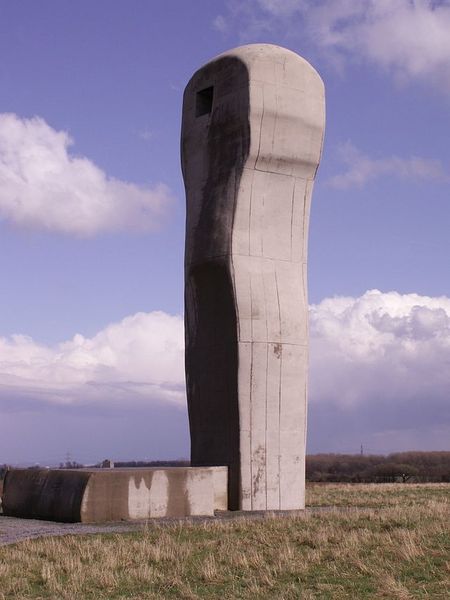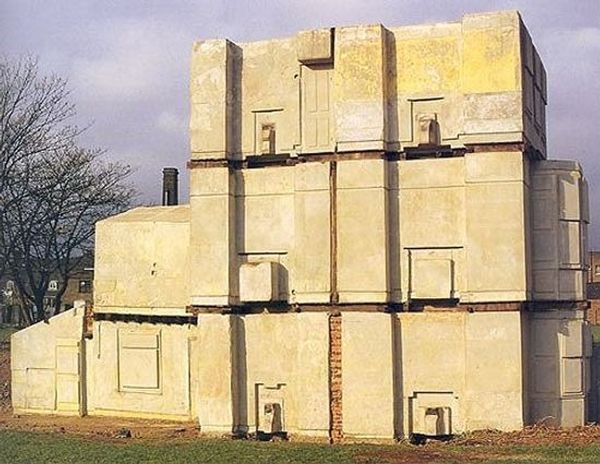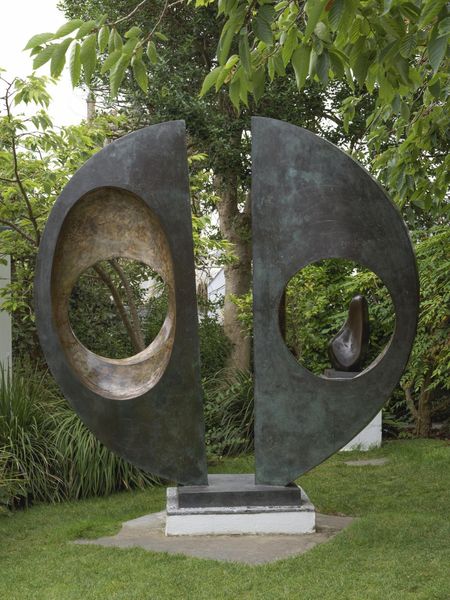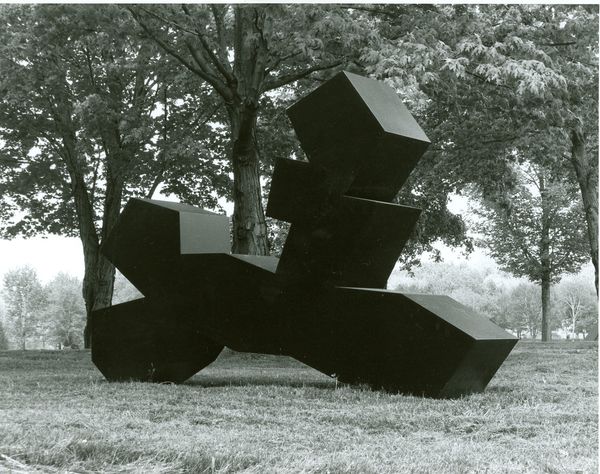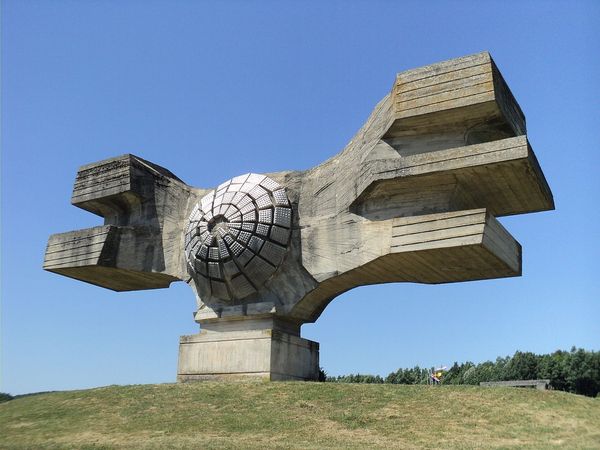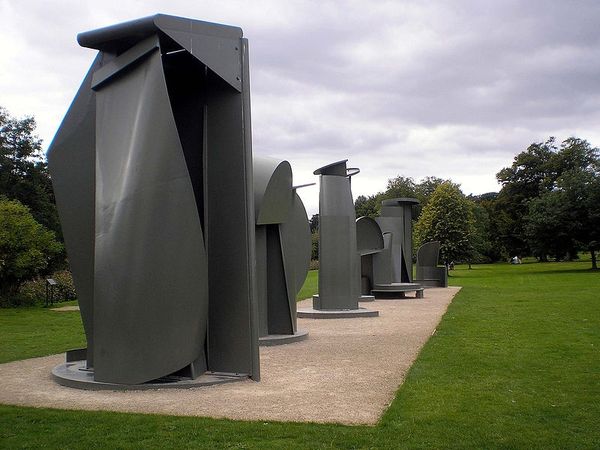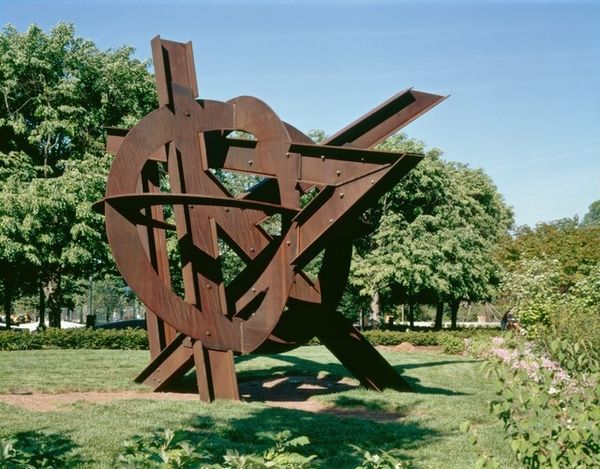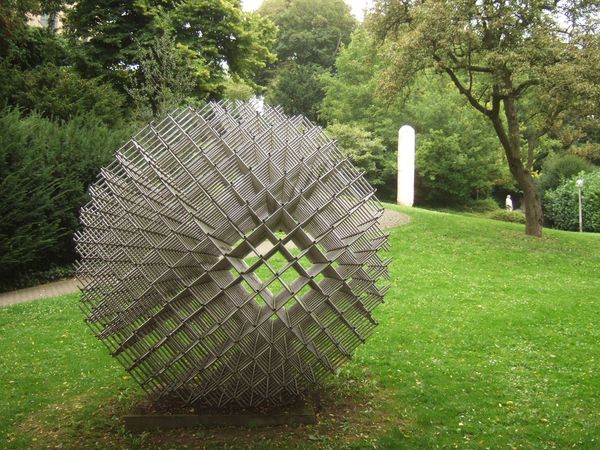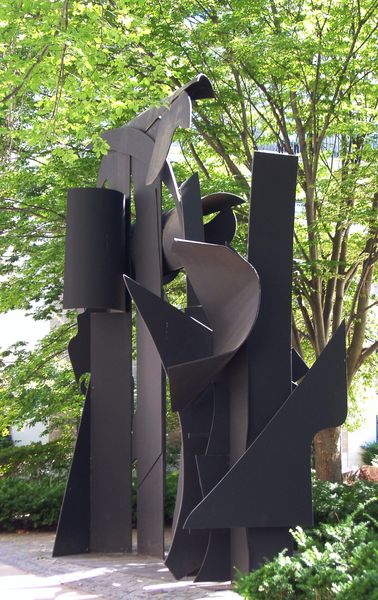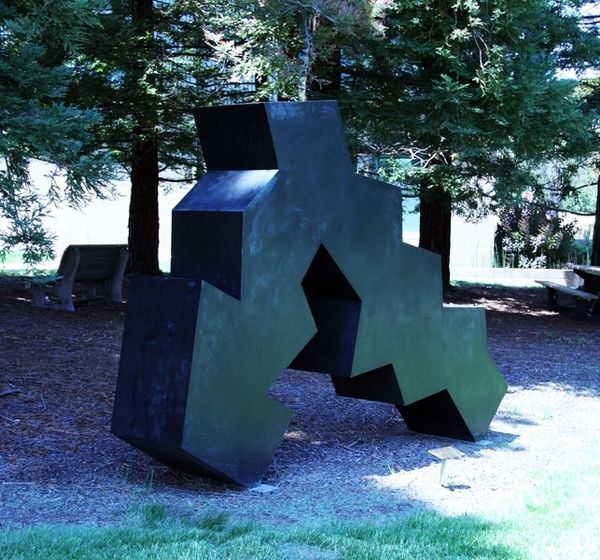
public-art, sculpture, site-specific
#
public art
#
urban landscape
#
concrete-art
#
street art
#
public-art
#
abstract
#
environmental-art
#
geometric
#
sculpture
#
site-specific
#
modernism
Copyright: Eduardo Chillida,Fair Use
Curator: This striking sculpture is titled "Gure aitaren etxea," by Eduardo Chillida. I am particularly struck by its scale. It dominates the landscape, while still feeling like it's interacting with it. Editor: It’s undeniably powerful, but the stark geometry combined with the coarse texture of the concrete makes it seem almost brutalist, or at the very least, industrial. It contrasts sharply with the soft green surroundings. How does the piece relate to the site, to its community? Curator: Well, "Gure aitaren etxea" translates to "Our Father's House" in Basque, reflecting Chillida’s deep connection to his Basque heritage and to San Sebastian. Chillida's material choice is very significant: concrete here is used not only for its raw qualities but to make massive forms possible. How different is this from bronze or carved stone in public art? It certainly lowers costs for civic investment in the arts. Editor: So, it’s accessible in a way, a conscious departure from elite artistic materials. That’s a key point to underscore, I think. The industrial materiality speaks to broader issues of postwar reconstruction and even architectural styles associated with utopian ambitions to remake society, literally building a new social world. And do we know where the concrete itself came from? Were local laborers involved in the construction, shaping this thing as much as Chillida? Curator: The creation of site-specific art is inevitably bound to locality. You can analyze this choice as both democratic and maybe somewhat nationalistic; reflecting both belonging and the common person. The geometric forms cut into it allow the surrounding trees to grow inside of it, integrating the structure into its setting. Editor: The very negative spaces give it such dynamism! In some ways, the missing volumes define it more than the concrete itself. The social space of the art seems porous; architecture almost yields to organic shapes. Curator: Exactly. The solidity of the concrete and the ephemeral quality of nature are combined into one piece, constantly playing off each other. Editor: Thinking about this now, there’s an interesting commentary being made about tradition, progress, the natural and the man-made all co-existing and co-mingling in this one piece. It's more complex than initially meets the eye. Curator: Precisely. Public art is so important because these pieces often take on meanings different from what their original authors conceived of them when produced.
Comments
No comments
Be the first to comment and join the conversation on the ultimate creative platform.
